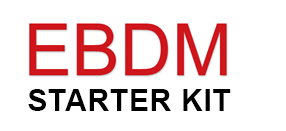EBDM Starter Kit
Activity 4: Understand and have the capacity to implement evidence-based practices

For evidence-based decision making and practices to take hold, policymakers and professionals across the system must
What Do We Mean By “Research Evidence”?
In the justice system, the term “evidence” is used in a variety of ways. It can refer to items collected at a crime scene, eyewitness accounts, or security camera footage. These types of evidence are referred to as “legal evidence.”
For the purposes of the EBDM initiative, however, the term “evidence” is used to describe findings from empirically sound social science research. The initiative refers to the results of this research as “evidence-based policy and practice.”
- share a common understanding of the key research findings underlying harm and risk reduction; and
- possess a core set of skills, or competencies, to effectively apply these empirically based research findings to their day-to-day practices.
Through the assessment and bolstering of professionals’ level of knowledge and skills, changes in attitudes, activities, and adaptation to new technologies occur, and pathways to constructive modifications in policy and procedure are opened—even in the face of unprecedented work demands and ever-tightening resources.
Elements of an EBDM justice system include
- a common understanding of the research (and its limitations) across all relevant agencies/staff;
- an understanding of the implications of these findings; and
- a workforce skilled in effectively carrying out evidence-based practices.
You may scroll to the next activity in order by clicking on the link at the bottom right of the page. Or you may skip to a specific activity by clicking on a link below:

